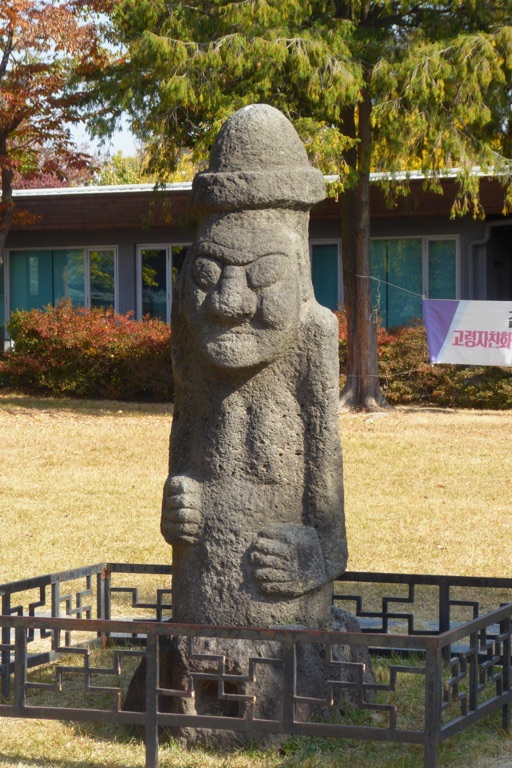Summary
The Mystic Guardians of Jeju Island
Dol hareubang, also known as the stone grandfathers, stand sentinel across Jeju Island, South Korea. These statues are emblematic of the island’s unique culture and history. Crafted from porous basalt volcanic rock, each Dol hareubang features a broad, smiling face, bulging eyes, a long nose, and a cap resembling a mushroom. Believed to be guardians against evil spirits, they symbolize protection and fertility. Locals began carving Dol hareubang in the 18th century, and they quickly became a distinct symbol of the island. These mysterious figures invite intrigue and admiration for their craftsmanship and the traditions they uphold.
Get your dose of History via Email
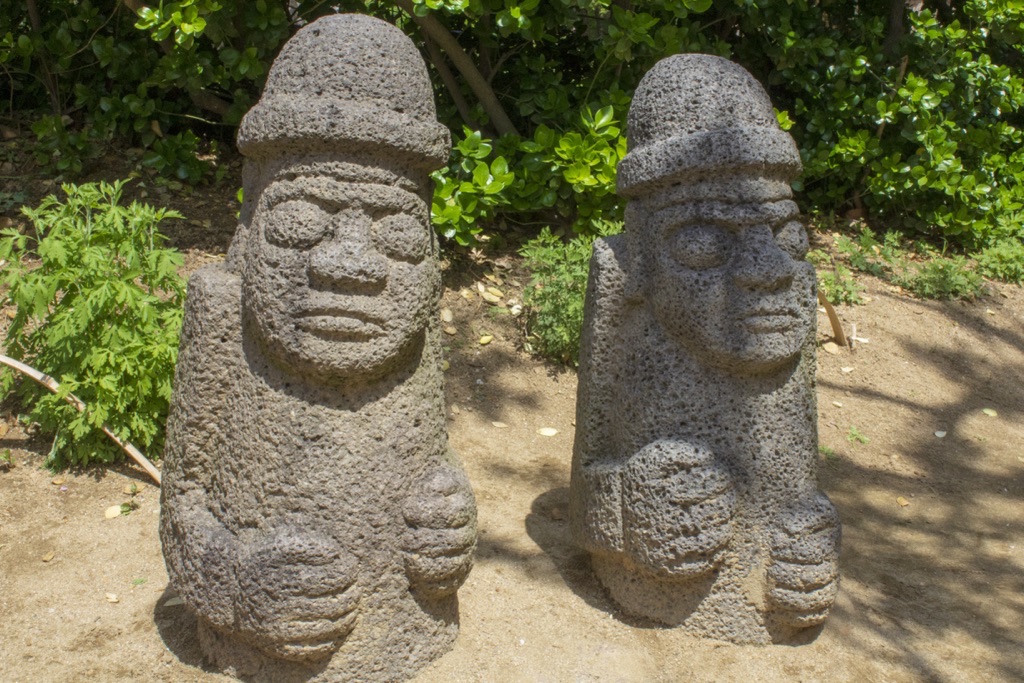
A Lasting Cultural Heritage
The cultural significance of Dol hareubang extends beyond their mysterious origins. They were traditionally placed outside of gates for protection and also given as gifts to bring blessings of fertility. Each statue‘s unique facial expressions and physical features tell its own story, making them beloved subjects of folklore and academic study. As UNESCO-designated treasures, these statues stand as a testament to Jeju’s rich heritage. They attract countless visitors annually, drawn to explore the folkloric tales and historical context surrounding these enigmatic figures.
Preservation and Impact of Dol Hareubang
In preserving Dol hareubang, conservationists ensure that future generations can engage with Jeju Island’s history. With careful restoration and public education efforts, the statues maintain their watchful presence. They also drive tourism, playing a pivotal role in Jeju’s economy. Visitors from around the world come to marvel at these stone grandfathers, buy miniature replicas, and soak in the island’s culture. Dol hareubang’s influence extends far, serving as an enduring symbol of Jeju’s identity and the universal value of preserving cultural artifacts.
Historical Background of Dol hareubang
The Origins of Stone Sentinels
On Jeju Island, Dol hareubang sculptures stand as iconic guardians of a rich past. These stone figures date back to the 18th century, during the Joseon Dynasty. Mystical in appearance, Dol hareubang, or “stone grandfathers,” were originally carved from the island’s abundant basalt rock. Scholars often debate their true origins. Yet, many accept that Jeju’s secluded position contributed to the unique cultural environment that birthed these statues. The island’s volcanic landscape provided both the materials and inspiration for these enigmatic figures, which continue to fascinate visitors and locals alike.
The Symbolism and Design
More than just stone, Dol hareubang are repositories of symbolism. They often sport a hat, indicative of a high social rank, and possess a jovial, yet watchful expression. Their hands rest upon their stout stomachs, seemingly at peace with the world. Traditionally, they represent protection from harm and, intriguingly, fertility. This is evident in the commonly held belief that touching the statues can bless individuals with offspring. Despite variations in design, each Dol hareubang holds a steadfast place in the collective memory of Jeju Island, embodying its distinct cultural identity.
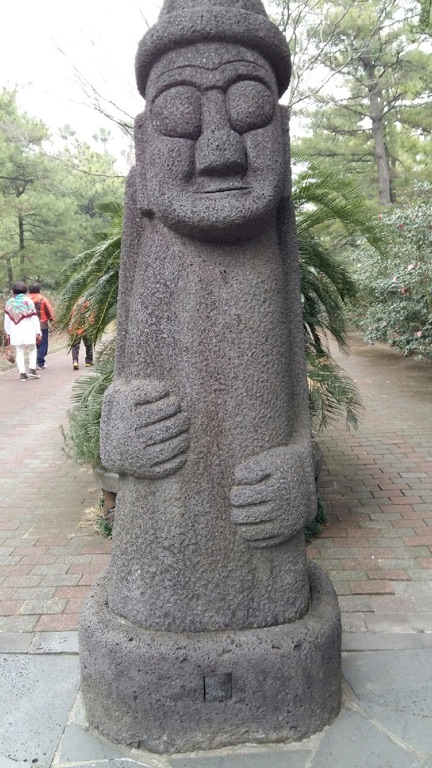
Their Role in Jeju’s Society
Dol hareubang evolved from mere decorations to central cultural figures. Initially, they served as guardians at the gates of villages and homes. Over time, their significance grew. They became an intrinsic part of Jeju’s identity. Additionally, they played a role as a sort of spiritual currency, given as gifts signifying respect or to cement alliances. Whether positioned outside gates or integrated into local celebrations, Dol hareubang intertwine with every aspect of Jeju life, securing their place in the island’s social fabric.
Jeju Island’s history cannot be told without mentioning the Dol hareubang. Each statue tells a unique story of the island’s isolation, creativity, and spirituality. The stone grandfathers, as sentinels, have watched over Jeju across centuries. They witnessed the ebb and flow of dynasties, wars, and peace. This durability imbues Dol hareubang with a sense of timelessness, bridging the past and present of Jeju Island. It’s this enduring nature that continues to draw the curious mind to delve deeper into their history.
Today, Dol hareubang not only mark history but also fuel it. As tangible links to Jeju’s past, they draw tourists from around the globe, eager to capture a glimpse of the mystique. Their image now adorns souvenirs and promotional materials, helping preserve and share Jeju’s heritage. In preserving Dol hareubang, the people of Jeju keep their stories alive. They ensure that future generations will continue to explore and appreciate the island’s unique cultural landscape. The stone grandfathers remain steadfast, silent narrators of a vibrant history.
The Discovery of Dol hareubang
Unearthing the Past
It was an ordinary day on Jeju Island when a curious shape emerged from the earth. It was the first of many Dol hareubangs to be rediscovered. Overgrown vegetation had hidden these figures, swallowing the history they guarded. The rediscovery brought excitement to historians and locals alike. It evoked a sense of wonder about the island’s past. As more Dol hareubangs were found, the pieces of Jeju’s historical puzzle began falling into place.
Impact on Local Culture
The rediscovery of Dol hareubang had an immediate effect on Jeju’s cultural awareness. Once the stone statues were found and recognized for their cultural value, there was an outpour of interest. Local stories and traditions, long neglected, resurfaced. These statues, once serving as guardians for the community, now stood as powerful symbols of Jeju’s identity and guardian spirits for cultural heritage itself.
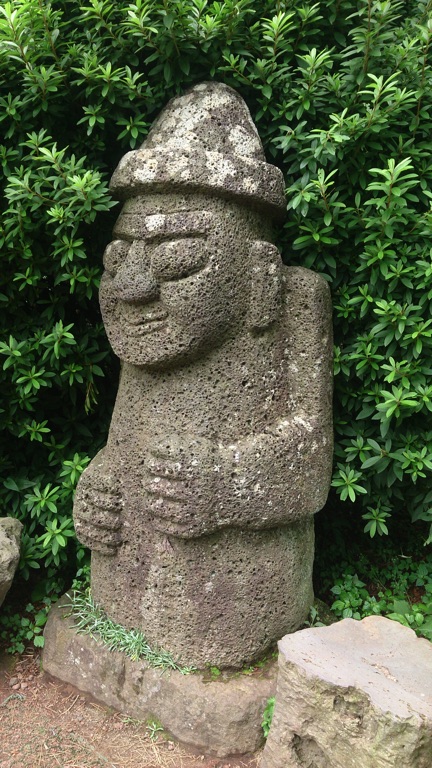
Historical and Academic Significance
Academics were enthralled by the discovery of Dol hareubang. They offered a tangible link to Jeju’s past societies. Researchers eagerly studied the carvings, size, and distribution of these statues to understand their roles in past daily life. Dol hareubang provided a unique lens through which to view the island’s history. These statues also provoked questions about historical religious practices and community structures on Jeju Island.
The finding of Dol hareubang did more than resurrect forgotten lore. It created a newfound interest in Jeju history at a global level. Suddenly, the island was on the map as a haven of mystique and enchantment. Tourism increased, with people eager to witness the awe-inspiring stone figures. Dol hareubang became a cultural icon, representing not only Jeju but the broader richness of Korea’s history.
The discovery underscored the importance of preserving cultural monuments. It served as a reminder of the secrets that our environment can still reveal. Efforts to protect Dol hareubang intensified after their discovery. Their preservation became a priority for Jeju’s people. The Dol hareubang stood, once again, as guardians—this time, of their own legacy and the island’s cultural narratives.
Cultural Significance, Dating methods, Theories and Interpretations
The Heart of Jeju’s Identity
The Dol hareubang statues are not just distinctive landmarks; they hold profound cultural significance for the people of Jeju Island. Serving as a bridge between the present and the mystical past, their presence echoes ancestral wisdom and traditions. Such importance is reflected in local customs. The belief that touching the statues can bring fertility and luck has survived through the ages. Moreover, their representation in arts, festivals, and folklore solidifies their role within Jeju’s cultural landscape.
Unlocking the Age of Statues
Understanding precisely when the Dol hareubang were created involves complex dating methods. Scientists and historians have used a combination of carbon dating and stratigraphic analysis to estimate their age. As the Dol hareubang are made from basalt, direct dating is challenging. Yet, through examining organic materials found nearby or under the statues, researchers have gleaned information. These studies suggest that the origins of the figures trace back to the 17th or 18th centuries, though some may be even older.
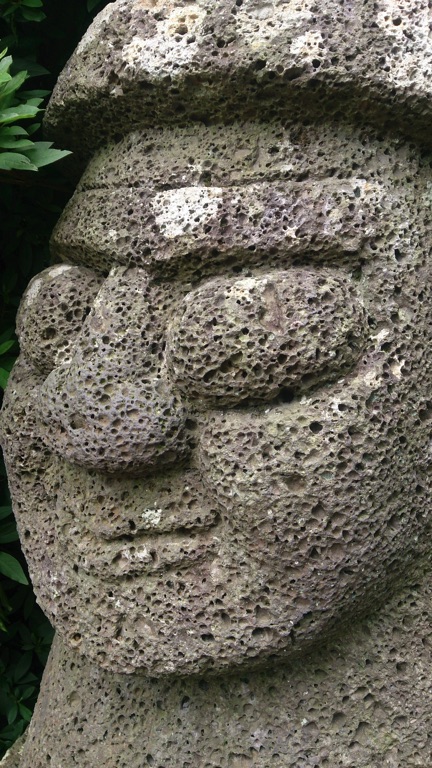
Diverse Theories and Perspectives
Theories about Dol hareubang vary widely. Some suggest they are linked to prehistoric religious practices, while others believe they represent political leaders or are simply artistic expressions with no symbolic intent. The lack of written records from the era when the statues were first carved leaves room for interpretation. Every new discovery adds to the patchwork of theories, enriching our understanding of these intriguing figures.
Interpreting Dol hareubang also requires a look at broader regional influences. Some theorists propose that interactions with neighboring cultures may have inspired their creation or influenced their design. By comparing the Dol hareubang to similar statues in mainland Korea or Japan, parallels can be drawn, offering an intriguing glimpse into historical cultural exchanges.
Regardless of the varied theories and interpretations, one thing remains clear: Dol hareubang stand as a pillar of Jeju Island’s heritage. Their silent watch over the island speaks volumes to their lasting legacy and the depths of history still left unexplored. As both guardians and symbols, they continue to captivate the hearts and minds of all who seek to unravel their mysteries.
Conclusion and Sources
In conclusion, Dol hareubang are not only unique to Jeju Island’s landscape but are also central to its cultural and historical narrative. From their enigmatic origins to the widespread speculation about their purposes and meanings, these stone grandfathers continue to captivate scholars and visitors. Though concrete evidence regarding their exact origins and uses remains elusive, the various studies conducted offer insight into Jeju’s past. Their preservation underscores the importance of cultural heritage and the stories that such artifacts silently convey. As new technologies and methodologies in archaeology and historiography evolve, perhaps more secrets held by the Dol hareubang will surface, continuing to enrich our understanding of this remarkable piece of world heritage.
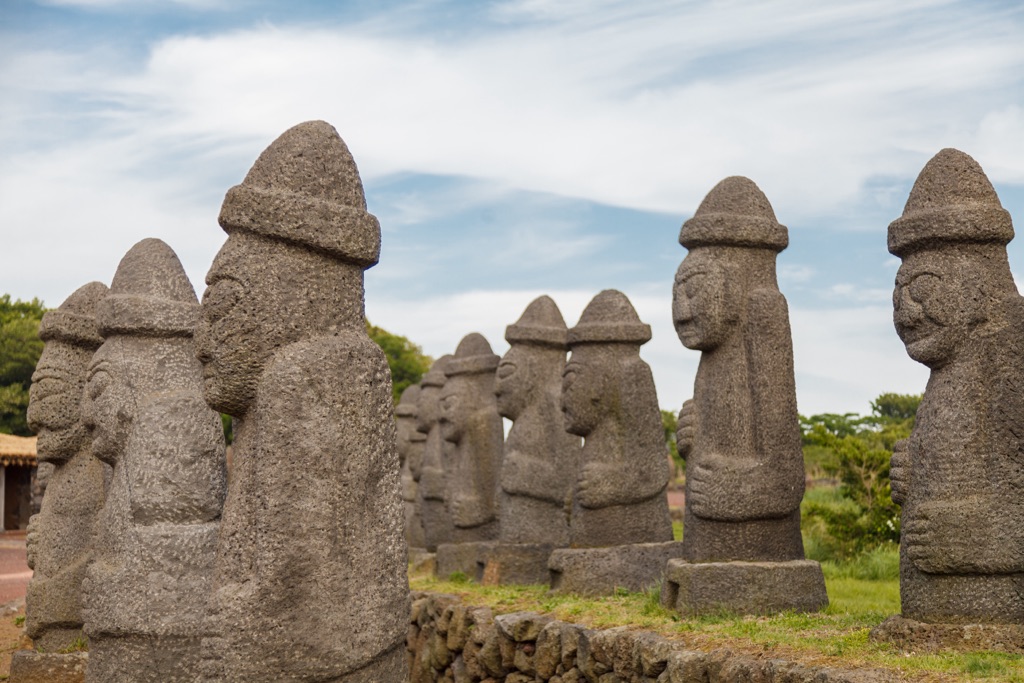
For further reading and to validate the information presented in this article, the following sources are recommended:
Or you can check any of these reputable archaeological and historical texts:
Jeju Haenyeo Museum. (n.d.). Dol hareubang: The stone guardians of Jeju.
Korean Cultural Heritage Administration. (2021). Jeju volcanic island and lava tubes.
Smith, J. P., & Kim, H. (2018). Jeju Island’s Dol hareubang: An icon of a unique heritage. Journal of Korean Studies, 23(2), 325–348.
Park, S. M. (2014). The myths and folklore surrounding Dol hareubang on Jeju Island. Folklore Studies, 45(2), 307–330.
Jeju Weekly. (2017, September 12). Stone statues stand as symbol of the island. Jeju Weekly.

